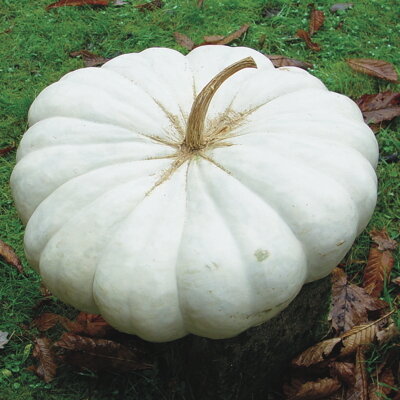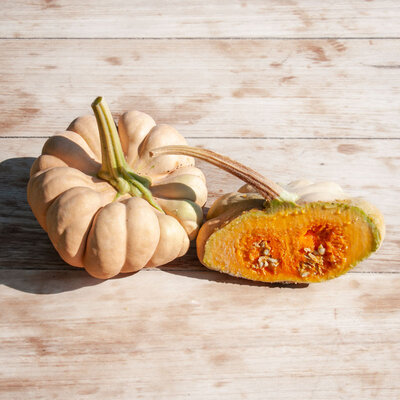
Soissons Gros Blanc - Rowing Common Bean
Haricot de Soissons Gros Blanc - String beans for shelling
The Gros Blanc Soissons bean, an old variety, can climb more than 3 m high and has large, light-green pods that turn yellow when ripe. They contain 4 to 6 very large white beans. Well-suited to storage as "dry beans", they have a fine skin and melt-in-the-mouth texture.
Characteristics of the Gros Blanc Soissons bean
The Soissons bean, Phaseolus vulgaris, is an ancient variety of shelling and string bean native to northern France's Aisne region. It is produced for the quality of its large, kidney-shaped white beans, to be eaten dry, contained in large green pods that turn yellow when ripe. With their thin skin and melt-in-the-mouth texture, these beans can be cooked in soup, purée or cassoulet, just like the Tarbais bean.
When to plant Soissons beans?
Soissons beans can be sown directly in the ground from mid-May to mid-July, or as early as March if the weather is mild. They can also be sown in pots in colder, wetter regions. Germination takes about a week. However, if seeds are soaked in lukewarm water before planting, emergence will be faster. Choose a sunny position and well-warmed, moist, well-drained soil.
Sow in rows 40 cm apart, every 8 cm, or in stacks of 3 to 5 seeds 40 cm apart in all directions, 2 to 3 cm deep. Cultivate plants 3 weeks after emergence. These pole beans can grow up to 2.50 m tall, and stakes must be installed before the voluble stems emerge for these climbing plants to develop harmoniously.
Cultivation is particularly successful in its native soil, but under warmer skies, the Soissons bean sometimes suffers from sunburn. The skin of the beans thickens and they lose their quality.
Carrots, cauliflower , beet and cucumber make excellent companion plants. Also consider tagetes and savory, which protect beans from insect pests. Avoid leeks and onions.
When to harvest Soisson beans?
Soisson beans are harvested in June and throughout the season, as soon as the pods start to turn yellow, so that the beans can be enjoyed semi-dry. For seed production or consumption of dry beans, wait until the pods are completely dry and brown before picking.
Although semi-dry beans can be kept for a few days in the fridge, it's best to eat them immediately after harvesting to benefit from their nutritional qualities. They can also be frozen or kept in sterilized jars after blanching. Dry beans can be stored for several years in an airtight container, but should be frozen for a few weeks to avoid bruchid infestation.
Its melt-in-the-mouth grains can be used in a wide range of recipes, from hot soups to cold salads, as an accompaniment to vegetables, meats and fish. They are also ideal for making cassoulets.
These products may also be of interest to you
in the ground
Sow directly in place, 2 to 3 cm deep, every 8 cm, in rows 40 cm apart, or in stacks of 3 to 5 seeds, 40 cm apart in all directions. After emergence, plant 3 weeks before planting. In mild climates, seed can be sown as early as April.
For staking, place stakes over 2 m high before the beans emit their long, voluble stalks. To enjoy fresh or semi-dry beans, harvest the pods when they start to turn yellow; to eat them dry, wait until the pods have dried completely.
May, June, July
July, August, September, October
in the ground
sunny
fort
all floor types
reheated, rich, drained
Phaseolus coccineus
early
40 grams
oval
fleshy
for shelling
White
From 200 to 300 cm
rowing
France
Inconnue
This old variety originated in northern France.











